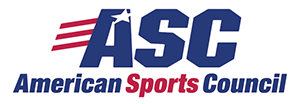Gender Quota Crowd Can’t Live Up to Their Own Standards of Truth
It’s been a week since the College Sports Council published its study of NCAA Division I scholarships, and to say that the response from our traditional antagonists has been wanting would be something of an understatement. Well, earlier this week, somebody finally stepped up, and in this case it was Melanie Ross Levin, the Outreach Coordinator for the National Women’s Law Center.
You can click here to read it, and I promise you it won’t take very long. For starters, Ms. Levin claims that our study is “full of holes,” yet she won’t trust her readers to make any sort of independent judgment on that question because she fails to link to the study. This is pretty typical of the gender quota crowd, who figure that if they just ignore people who disagree with their agenda, they’ll go away. I guess that isn’t working.
It also pretty much gibes with the way they work online, where they not only consistently fail to link to those they disagree with, they also neglect to give anyone an opportunity to freely comment on what they have to say — witness the Title IX Blog, which has been in business for a while now, yet still doesn’t allow anyone outside of approved contributors to participate in the conversation about the law and how it affects college athletics.
In any case, please take a moment to read Ms. Levin’s post here, an argument that amounts to not much more than “but they didn’t include football,” something we acknowledged in the report. Unacknowledged by Ms. Levin, however, is the fact that 28% of NCAA Division I programs don’t have football teams. Which begs the question: if those schools don’t have football, why should they have to comply with NCAA scholarship limits that appear to be designed to discriminate against men?
Also unacknowledged by Ms. Levin is the fact that all of the numbers we used were culled from the NCAA itself. Here’s the relevant passage from a note we published with the study:
Research Note: The underlying data from this study was obtained from the NCAA (“1981-82-2006-07 NCAA Sports Sponsorship and Participation Rate Report” and “2006-07 NCAA Division I Manual“) and the National Federation of State High School Associationsusing the 2006-07 academic year as a common baseline. The figure for NCAA Division I Maximum Allowable Scholarships in Gender Symmetric Sports was obtained by multiplying the number of Division I teams in which both men and women compete by the scholarship limits set out by the NCAA in the2006-07 Division I Manual. Please note, not all NCAA institutions fully fund their programs to the NCAA Division I Scholarship Limits. For example, Ivy League institutions do not award athletic scholarships, though most athletes at those institutions do receive some form of financial aid. The final chart, “The Long Odds Against Athletic Scholarships,” was calculated by dividing the number of high school participants by the maximum number of scholarships available.
In other words, all we really set out to do was to publicize some hard facts that not a lot of folks were aware of. Here’s another of those inconvenient truths: despite the fact that boys and girls participated in high school soccer in roughly equal numbers in the academic year we analyzed in our study, the NCAA sponsors far more teams for women than for men (300 to 195). Click here to review all of our charts and graphs.
Now, if you really want to know how to publish a study that’s both full of holes, and more or less completely dishonest about the way it was put together, take a look at some of the things we wrote last Fall about a study that was published by the Women’s Sports Foundation. Clickhere and here for more.
And when we looked at that study, what did we find?
- WSF provided no links to the source data, which was witheld from public view;
- WSF represented the 1995 baseline data as though it were independent, government material. But in reality, that data was collected by the WSF itself, which meant there was no way to verify its accuracy;
- Finally, WSF presented the study as done by an independent researcher, and then failed to disclose that the person who conducted the study, John Cheslock at the University of Arizona, was paid by WSF to do so.
And now, the gender quota crowd turns around and tells us that our study is full of holes?
The bottom line here is pretty simple: when you tell the truth about how the misapplication of Title IX is killing men’s athletics, the only way you can defend the law is by doing your level best to obscure the truth.
